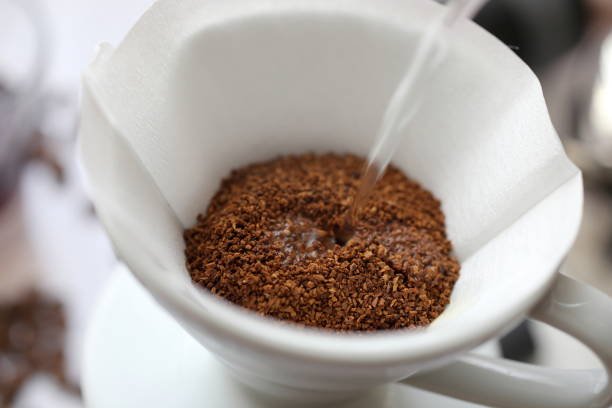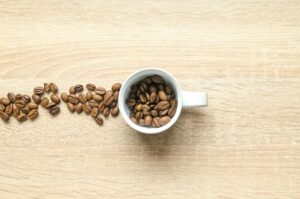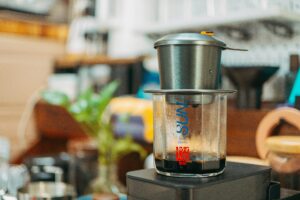Coffee enthusiasts have long debated the virtues of light roast versus dark roast, each camp fiercely defending its flavor and strength. But amidst the battle for the perfect brew lies a more intriguing question: which packs more caffeine? Today, we delve into the heart of this hot-button issue to uncover the truth behind caffeine content in your morning cup.
As you savor that first sip of coffee, have you ever pondered whether your choice of light or dark roast impacts your caffeine intake? Many assume that the rich, bold flavors of a dark roast equate to higher caffeine levels. However, beneath the surface lies a surprising twist – it’s not just about taste but also about how roasting affects caffeine concentration. Buckle up as we embark on a journey through brewing methods, flavor profiles, and health implications to demystify the connection between roasts and their caffeine content. Are you ready to unravel the mystery and choose your pick wisely for that energizing boost? Join us as we uncover it all in our quest for caffeinated enlightenment!
Table of contents

Light Roast vs. Dark Roast: Caffeine Content Comparison
When it comes to the caffeine content in your cup of coffee, the battle between light roast and dark roast is a fascinating one. Contrary to popular belief, the misconception that dark roast contains more caffeine simply because of its bold flavor is just that – a misconception. In reality, it’s not the darkness of the roast that determines caffeine levels but rather the roasting process itself. This is where things get interesting – while you might assume that a deep, rich dark roast would pack a bigger caffeine punch, it’s actually the lighter roasts that come out on top in this regard.
During the roasting process, coffee beans lose density and volume as they are exposed to heat for longer periods. This means that the longer a bean is roasted, the more it expands and loses mass, which also leads to a decrease in caffeine concentration. On the other hand, light roasts undergo less exposure to heat, resulting in higher levels of caffeine retention within each bean. So, if you’ve been sticking with dark roasts thinking you were getting an extra jolt of caffeine, it might be time to reconsider your brew of choice.
Next time you reach for your morning pick-me-up, remember that the roast level plays a significant role in determining how much caffeine you’re actually getting with each sip. So, if you’re looking to kickstart your day with a higher dose of caffeine without compromising on flavor profiles or complexities, opting for a light roast might just be the way to go. It’s all about understanding how those beans are roasted and choosing what suits your taste and energy needs best.
Brewing Methods and Caffeine Extraction
When it comes to brewing your favorite morning cup, the method you choose can significantly impact the caffeine content in your coffee. Take espresso, for example – this concentrated brew might seem like a surefire way to get a jolt of caffeine, but surprisingly, due to its shorter extraction time, it often contains less caffeine per serving compared to a standard drip coffee. The longer the water is in contact with the coffee grounds during brewing, the more caffeine is typically extracted. If you’re looking for a potent pick-me-up, a strong drip coffee could be your best bet.
Grind size
Moreover, grind size plays a crucial role in determining how much caffeine makes its way from the beans into your mug. Finely ground beans have increased surface area for extraction, potentially resulting in a more robust caffeine punch. On the other hand, coarser grounds may lead to reduced caffeine levels as not all compounds have adequate time or space to dissolve effectively during brewing. Next time you reach for that French press, consider adjusting your grind size based on your desired caffeine potency.
Let’s not forget about water temperature – an element that can’t be overlooked when striving for that ideal balance of flavor and energy boost. Hotter water tends to extract more caffeine from coffee grounds than cooler temperatures. So if you prefer piping hot brews in the morning, chances are you’re also maximizing the amount of caffeine in each sip. Understanding these details allows coffee enthusiasts to tailor their brewing process according to their preferences – whether they seek bold flavors or an extra kick of caffeine to jumpstart their day.
Flavor Profiles and Caffeine Perception
When it comes to the world of coffee, the distinction between light roast and dark roast goes beyond just caffeine content; it delves into a realm of diverse flavor profiles. Light roasts are often lauded for their bright acidity, floral or fruity notes, and a pronounced essence of the bean’s origin. On the other hand, dark roasts boast bold flavors with hints of chocolate, caramel, or even smokiness derived from the intense roasting process. These distinct characteristics arise from how different beans respond to varying levels of heat during the roasting phase. Light-roasted beans retain more of their original characteristics and showcase nuanced flavors that can be overshadowed by prolonged roasting in dark variations.
Perception acts as a significant influencer in associating strong flavors with higher caffeine concentrations. The robust taste of a dark roast can sometimes trick our senses into believing there’s a higher caffeine kick involved. However, it’s essential to recognize that flavor intensity doesn’t necessarily equate to caffeine levels in your cup. Understanding this nuance can help coffee enthusiasts appreciate the complexities within each sip without solely relying on taste strength as an indicator of caffeine potency.
To illustrate this point further: imagine savoring a light roast Ethiopian Yirgacheffe known for its aromatic floral notes versus indulging in a deep espresso blend roasted to a rich Italian roast level. While the flavors may stand at opposite ends of the spectrum, it doesn’t directly translate to one offering more caffeine than the other. Embracing these nuances allows coffee lovers to fine-tune their preferences based not only on desired taste experiences but also on individual caffeine intake goals for an enriching coffee journey ahead.

Health Implications
Health Implications of Caffeine LevelsUnderstanding the health implications of caffeine levels in light and dark roast coffee is crucial for individuals who are mindful of their daily intake. While both roasts offer distinct flavor profiles, it’s important to note how their caffeine content can impact those with specific health concerns. Light roasts, known for their bright acidity and complex flavors, contain higher caffeine levels compared to their darker counterparts. For individuals seeking a morning boost without an overload of caffeine, opting for a light roast might be the way to go.
Balancing caffeine intake
Balancing caffeine intake becomes vital, especially for those who may be sensitive to its effects or have underlying health conditions. Dark roasts, often appreciated for their bold and smoky notes, can still deliver a satisfying cup without an overwhelming dose of caffeine. By understanding your body’s response to varying caffeine levels found in different roast types, you can tailor your coffee choice accordingly to enjoy both taste and wellness benefits.
For instance, if you’re looking to reduce your overall caffeine consumption while still savoring a rich coffee experience, experimenting with brewing methods like cold brew or pour-over with light roasts can help strike that balance. These methods can extract nuanced flavors from light roast beans while moderating the amount of caffeine released into your cup. Ultimately, being mindful of how your body reacts to differing caffeine levels in light and dark roast coffee allows you to make informed choices that support both your taste preferences and well-being.
Mythbusting Common Beliefs
One prevalent myth in the world of coffee is that darker roasts inherently contain more caffeine than their lighter counterparts. Contrary to popular belief, the roasting process actually leads to a reduction in caffeine content. Research studies have consistently shown that light roast coffee beans, which undergo minimal roasting, retain higher levels of caffeine compared to dark roasts. This misconception often stems from the assumption that strong flavors equate to higher caffeine potency, but the reality is quite different.
Dispel this myth
To dispel this myth,let’s delve into a commonly cited study published in the “Journal of Analytical Toxicology.” The research found that light roast coffees generally had between 160-280 milligrams of caffeine per 8-ounce cup, whereas dark roasts contained around 60-120 milligrams. These numbers clearly demonstrate that lighter roasts indeed pack a more significant caffeine punch than their darker counterparts, challenging long-held misconceptions within the coffee community. By understanding the actual science behind caffeine levels in different roasts, consumers can make more informed decisions when choosing their preferred brew.
It’s essential for coffee enthusiasts and casual drinkers alike to grasp these nuances surrounding caffeine content in light versus dark roast coffees. Armed with accurate information, individuals can better tailor their coffee choices based on personal preferences and desired effects. As we debunk these common beliefs and shed light on the truth behind caffeine levels in various roasts, it becomes apparent that flavor intensity does not always correlate with a higher energy boost—highlighting the importance of education in navigating the complex world of coffee selection.
Conclusion
In conclusion, the age-old debate between light roast and dark roast coffee comes down to a matter of caffeine content. Contrary to popular belief, it is the light roasts that typically pack a more caffeinated punch due to the shorter roasting process that helps preserve the caffeine levels in the beans. Understanding how brewing methods and extraction processes can further influence caffeine content allows coffee enthusiasts to tailor their brews to their desired caffeine intake.
As you savor your next cup of coffee, remember that your preferences should not only be based on taste but also on your desired caffeine levels. Whether you lean towards the bright acidity of a light roast or enjoy the boldness of a dark roast, exploring different options can enhance your coffee experience. So, embrace the nuances of flavors and caffeine concentrations in each roast and find what truly satisfies both your palate and your need for that morning pick-me-up. Cheers to indulging in a perfectly balanced cup of joe that suits both your taste buds and energy requirements!






